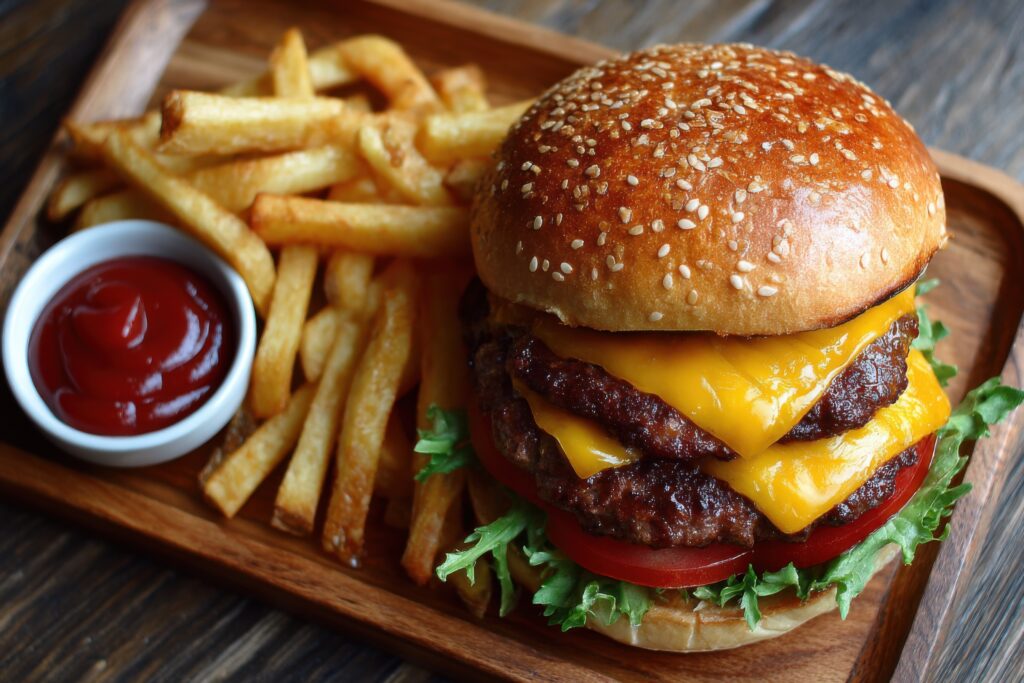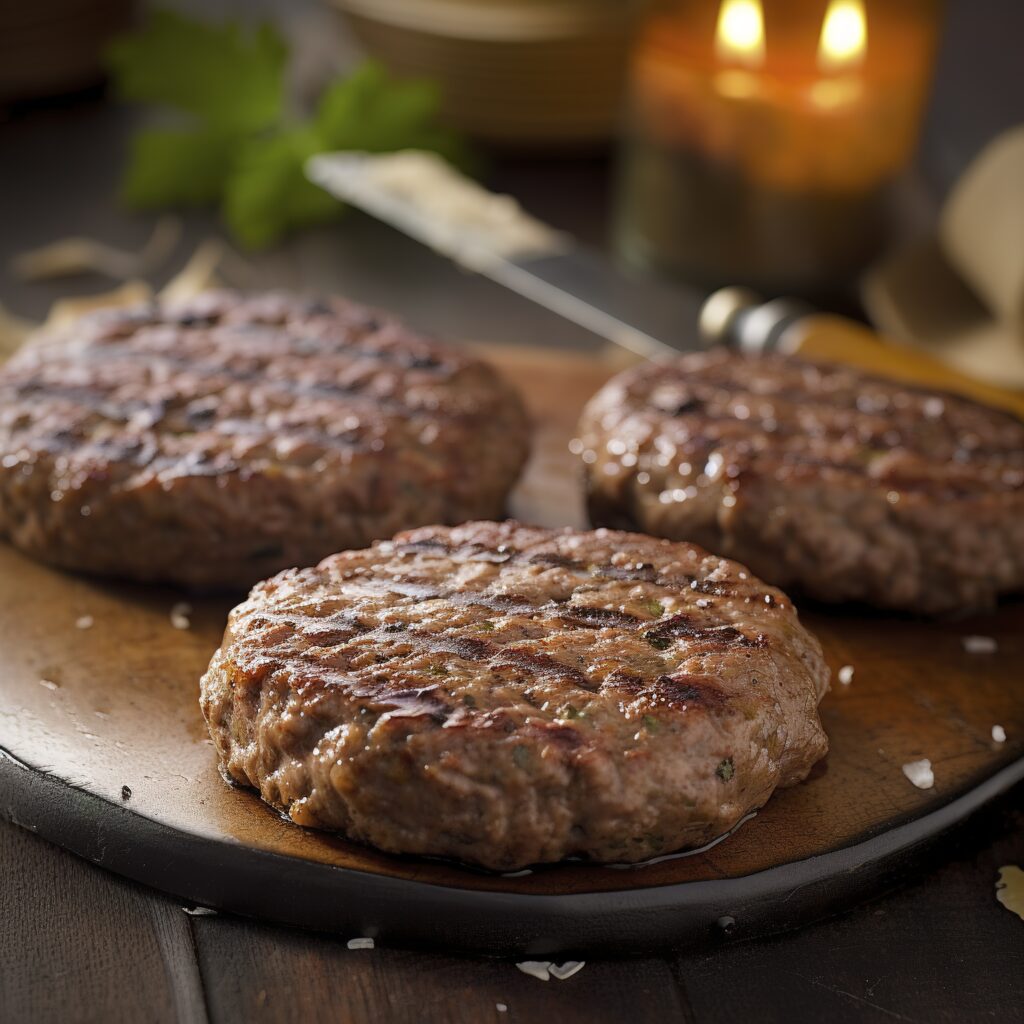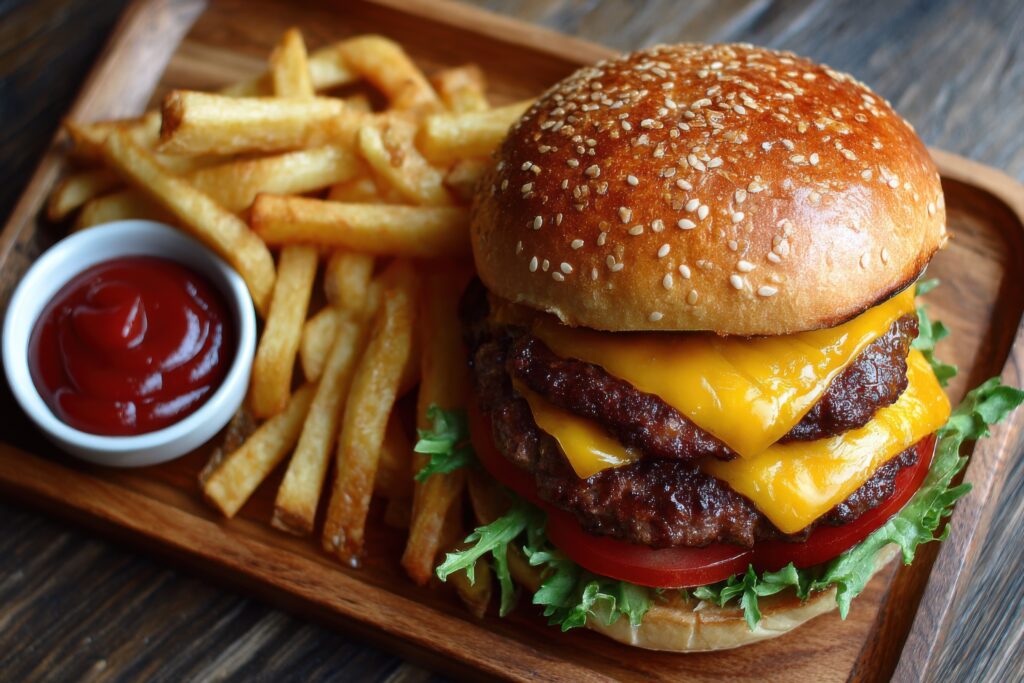
Introduction
Think homemade burgers can’t beat your favorite fast-food joint? Think again! Learning how to make hamburger patties at home means you get total control—juiciness, flavor, and freshness tailored exactly to your taste. There’s nothing quite like biting into a homemade burger that’s juicy, perfectly seasoned, and grilled just right. Today, I’m walking you through every detail—from the beef ratio and shaping techniques to flavor hacks and cooking methods—so you can skip fast food and deliver restaurant-quality patties in your own kitchen. Whether you grill, pan-sear, or smash them on a cast-iron skillet, this guide covers it all. Let’s build the ultimate burger foundation!
1. 🥩 Choosing the Best Meat & Fat Ratio
The fat-to-meat ratio is crucial:
- 80/20 (80% lean, 20% fat) is the most common for juicy burgers. Southern Living confirms that 80/20 ground beef delivers great flavor and moisture.
- Some cooks, especially for smash-style patties, prefer 75/25 or 70/30 blends for richer results. Reddit users note “70/30 is great for thin smash burgers.
- Taste of Home suggests experimenting with ratios like 70/30 if you’re after really juicy burgers.
- For ultimate control and freshness, consider grinding your own meat using chuck, brisket, or short ribs for better texture and traceability. Serious Eats and Bon Appétit both recommend this approach.
When grinding yourself, a handy mix is 50% chuck + 25% brisket + 25% sirloin, balancing flavor and fat.THE BBQ BRETHREN FORUMS
Tip: Keep all equipment and meat ice-cold to prevent fat smearing and ensure firm patties.
2. 🧂 Seasoning Like a Pro
Less is more: classic seasoning is simply kosher salt and freshly ground black pepper, applied just before cooking—never during mixing. Kenji López-Alt strongly emphasizes not salting raw meat to avoid tough, dense texture.
For flavor variation, you can gently mix in:
- A splash of Worcestershire sauce
- A pinch of onion or garlic powder
- A teaspoon of crushed crackers or Panko to retain juices and add subtle texture.
Season either side right before placing on the hot surface to avoid moisture loss.
Table of Contents
3. 🧱 Patty Shaping for Consistency
- Weigh portions for uniform cooking—¼ to ⅓ lb (≈4–5 oz) is ideal. Southern Living recommends precisely dividing meat via scale.
- Gentle forming: Roll into balls and press lightly into patties without overworking, preserving tenderness. Serious Eats backs this approach.
- Dimple trick: Use your thumb to press a shallow well at the center of each patty—this prevents puffing and keeps burgers flat.
- For precision, use a jar lid or round mold: line the inside with plastic wrap, fill with meat, flatten, and release neatly. Chill the patties on parchment-lined trays for at least 30 minutes.
Cold patties help maintain structure and reduce shrinkage during cooking.
4. 🔥 Cooking Methods: Grill, Skillet, or Smash
Grilling:

- Preheat grill to medium-high (350–400 °F). Clean and oil grates.
- Place patties and flip once; do not press down. Add cheese just after flipping, covering with lid to melt. Bon Appétit recommends using a thermometer targeting 160 °F internal temp.
Cast-Iron Skillet or Pan:
- Use a neutral oil (e.g., vegetable or canola).
- Sear for 3–4 minutes per side for medium-thick patties.
- Cheese melts faster under a covered dome.
Smash Burger:
- Place meat ball on very hot griddle and press flat (smash).
- Cook 2–3 minutes each side until well‑browned, adding cheese in the final minute and covering to melt. Business Insider notes this yields juicy, crispy burgers.
Pro Tip: Avoid flipping more than once and don’t press the patty mid-cook—this squeezes out precious juices.
5. 🍔 Building the Perfect Burger
- Toast buns on grill or skillet in leftover fat or butter for flavor. Southern Living endorses this for crisp texture.
- Add base layers: lettuce, tomato, onion, pickle, and your favorite toppings like cheese, bacon, or avocado.
- Apply sauces thoughtfully: jammier sauces go on the patty, creamy condiments on the bun.
6. 💡 Pro Tips & FAQs
Q: Why do burgers fall apart?
A: Use chilled meat, minimal hand contact, and optionally a binder (egg or cracker crumbs). Chill patties before cooking.
Q: Burgers are dry. What now?
A: Choose a higher fat ratio (like 75/25), cook to medium (140–150 °F), or try adding evaporated milk with breadcrumbs to retain moisture.
Q: How to tell doneness without thermometer?
A: Use the touch test—soft=rare, semi-firm=medium, firm=well-done—and check for clear juices.
Q: Meat too dense?
A: Don’t overwork it. Season only after forming patties. Fresh grinding = better texture.
Q: Best fat ratio?
A: 80/20 is standard; 75/25 for richer burgers; 70/30 for thin, smashing-style patties. Don’t exceed 30% fat per U.S. regulations.
7. Flavor Variations & Creative Mixes
- Classic American: Salt + pepper and optional Worcestershire.
- Southwestern twist: Cumin, smoked paprika, chopped cilantro.
- Stuffed burgers: Cheese or caramelized onions inside.
- Alternative patties: Mix ground lamb, turkey, or veggie-bean for variety—ensure proper binders. Wikipedia explains veggie burger binding using grains or starches.
8. Nutrition, Storage & Safety
- Store formed patties in fridge for up to 1 day, freezer up to 3 months—wrap with wax paper between patties.
- Cook ground beef to a minimum internal temperature of 160 °F per USDA guidelines. Let rest 5 minutes before serving to redistribute juices.
- Estimated nutrition (per ¼ lb patty, no toppings): ~280–320 kcal, 20–25 g protein, 0–1 g carbs, depending on fat ratio and seasonings.
🔚 Final Thoughts

Mastering hamburger patties starts with selecting the right meat, shaping the patties with care, and cooking them with respect for flavor and texture. Once you nail these basics, you’ll be crafting burgers better than most restaurants—juicy, uniform, and full of flavor every time.
📌 Pin this guide for your next cookout, share your favorite flavor combination in the comments, and explore our blog to build the ultimate burger plate!
Enjoy grilling—and here’s to your best burger yet.
Try this today also:
Hamburger

